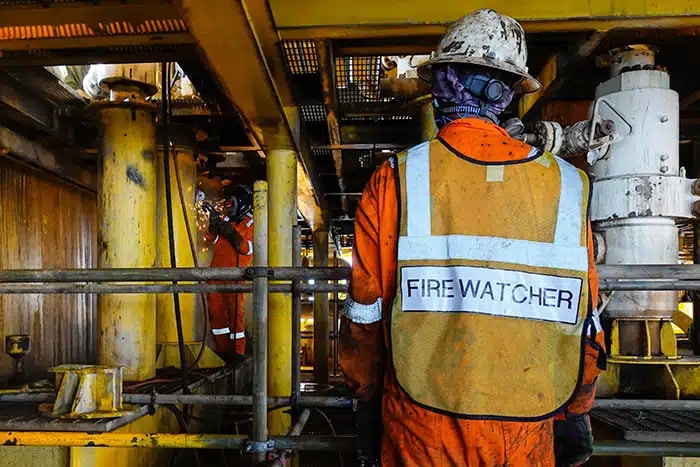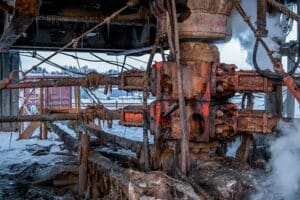
From injury and loss of life to environmental and reputational damage, metal failure costs are devastating on all fronts. Corrosive metal failure and friction were at play in recent high-profile accidents where the final bill is still unknown. However, there are past events where the real cost of metal failure is known. Here, we’ll discuss the Deepwater Horizon oil spill, where corrosion and fatigue contributed to financial, legal, environmental, and human loss. We’ll also discuss how corporations can mitigate future risk of metal failure.
“Complex Systems Almost Always Fail in Complex Ways”
The Deepwater Horizon spill, also known as the BP oil spill, occurred in April 2010, in the Gulf of Mexico. As the final report from the National Commission on the BP Deepwater Horizon Oil Spill explains – by quoting the board that investigated the loss of the Columbia space shuttle – “complex systems almost always fail in complex ways.”
While a series of mistakes contributed to the tragedy, the failure of a blowout protector (BOP) caused the spill. Engineers make up a BOP with a large, specialized valve or multiple valves assembled together to seal, control, and monitor oil and gas wells. Operators use two main types of BOPs to prevent uncontrolled release of crude oil or natural gas during drilling operations:
Ram Blowout Preventers
These use a pair of steel plungers, or rams, which close around the well pipe. Some are designed to seal an open wellbore, while others cut through the drilling pipe and then seal the well.
Annular Blowout Preventers
Designers create these to form a seal in the annular space between the pipe and wellbore. Annular blowout preventors can also seal the wellbore entirely if no pipe is present. Typically, operators install them above the ram preventers, and they can seal around several different diameters of pipe, drill collars, or the wireline.
During normal drilling operations, the BOP remains open to allow drilling mud and cuttings to circulate back to the surface. If sudden increase in pressure is detected, indicating the potential for a blowout, the BOP is closed. Closing the BOP prevents the uncontrolled release of oil or gas.
Of course, harsh environmental conditions, including saltwater, expose offshore oil and gas drilling rigs to accelerated corrosion. Furthermore, high pressures, high temperatures, and the corrosive nature of the materials during extraction and processing creates challenging environments for metal equipment. The sheer complexity of a BOP, especially modern ones with multiple ram and annular preventers, can lead to difficulties in operation and maintenance. This complexity also increases the chances of a malfunction.
This is what happened on the Deepwater Horizon — the rig’s blowout preventer failed, due in part to corrosion, which had weakened the metal components of the device over time. As a result, when the blowout occurred, the weak metal components gave way to pressure and hydrocarbons flew up the well at an uncontrollable rate, causing an explosion and fire on the rig.
Metal Failure By the Numbers: The Largest Marine Oil Spill in History
The U.S. government estimated that the Deepwater Horizon discharged 4.9 million barrels (210 million US gal; 780,000 m3) of oil, making it the largest oil spill in the history of the petroleum industry. In total, BP has paid nearly $70 billion for the ecological disaster, highlighting the critical importance of BOPs for the safety of drilling operations and environmental protection:
-
Fatalities: 11
-
Injuries:17
- Cleanup costs: The initial response involved efforts to cap the well, contain the spill, clean up the oil, and mitigate environmental damage. BP, the operator of the Deepwater Horizon, reported that the cost of the immediate response was around $14 billion.
- Settlements and fines: BP has paid out tens of billions of dollars in settlements, fines, and penalties. The largest single amount was a $20.8 billion settlement with the U.S. Department of Justice in 2015, which was the largest environmental damage settlement in U.S. history. Other settlements have been levied related to damage to natural resources, economic harm, and penalties under the Clean Water Act.
- Compensation claims: BP set up a $20 billion fund to compensate individuals and businesses for economic losses and medical claims resulting from the spill. This includes loss of income from fishing and tourism industries that saw negative impact by the spill.
- Environmental and research costs: BP has committed billions of dollars to long-term environmental monitoring and research to assess and mitigate the spill’s environmental impact.
- Corporate reputation and stock value: BP’s stock value plummeted by more than 50% in the immediate aftermath of the spill, and the damage to the company’s reputation has had long-term impacts on its business.
The National Commission on the BP Deepwater Horizon Oil Spill and Offshore Drilling concluded that “to date, we have not seen a single instance where a human being made a conscious decision to favor dollars over safety.” Rather, it was a “series of complex systems failures—both human and mechanical—that allowed the Macondo well to blowout.”

A drilling rig is preparing to install the Blowout Preventor stack. The BOP stack is one of the critical components on a drilling rig to prevent blowout.
The Production vs. Protection Tradeoff
“This disaster was preventable, had existing progressive guidelines and practices been followed,” wrote Robert Bea. Bea is a veteran oil industry analyst and engineering professor at the UC Berkeley where he co-founded its Center for Catastrophic Risk Management. At the time, Bea was also at the head of the Deepwater Horizon Study Group, an independent body consisting of industry and government professionals. The group concluded that the Deepwater Horizon oil spill, “was a chain of important errors made by people in critical situations involving complex technological and organization systems.”
A 2010 article in Popular Mechanics explains that “Bea and other engineers subject catastrophes like Deepwater Horizon to the science of failure analysis for good reason: Studying industrial disasters can lead to understanding the root causes behind every accident, which is the critical first step toward improving safety and preventing future big bangs.”
Balancing Production and Protection
The Deepwater Horizon Study Group’s report explains how imbalances developing between production and protection are driving forces in causation of many prior system disasters. Monetary, human, and material options provide protection and need to be in use. More protection costs more resources. If the protection is effective, accidents and failures decrease. With such decreases, associating costs from accidents and failures are reduced. Thus, effective protection can be good business.
However, in the case of infrequently occurring system accidents like Deepwater Horizon, “there is often little or no effective feedback process to help indicate how protection can improve or demonstrate why it is necessary…when given the opportunity to save time and money—and make money—tradeoffs were made by the system operator for the certainty of the measurable thing—production. The perception was that there were no downsides associated with the uncertain, difficult-to-measure thing—failure caused by the lack of sufficient protection.”
The result: An “undetected entry of high pressure, high temperature highly charged hydrocarbons into the Macondo well. This important change in the environment was then allowed to exploit multiple inherent weaknesses in the system’s barriers and defenses to develop a blowout. Once the blowout occurred, additional weaknesses in the system’s barriers and defenses were exposed and exploited.”
Mitigating the Metal Failure with Proactive Protection
The Deepwater Horizon Study Group demonstrated why people only activate processes to help define the system’s revised reliability requirements after infrequent system disasters occur. In short, “the process is reactive, not proactive.”
Engineers must balance production and protection decisions during the design process. Taking a proactive stance can be a hard sell — it’s simply easier to measure production and profitability than protection. “There is no accounting for system accidents and failures that do not happen. Investments (in protection) are made with no apparent or perceived benefits.”
Economic Impact and the Value of Corrosion Mitigation
Yet, six years after the Deepwater Horizon spill, the National Association of Corrosion Engineers estimated that corrosion costs across all industries in the U.S. was up to 2.7% of GDP, or over $500B. NACE estimates that using currently available corrosion mitigation technologies could cut that cost by up to 30%, or about $140B. In the case of Deepwater Horizon, material selection, regular inspection and maintenance, and the use of protective coatings would have played a role in neutralizing the high-pressure, high-temperature environment, thus lowering the risk of metal fatigue in BOP components.
Specifically, Electrolizing® thin dense chrome protects against corrosion by forming a physical barrier between the environment and the base metal. This is similar to a coat of paint. Hard, low-friction thin dense chrome can withstand the high pressures and stresses involved in drilling operations. This reduces the frequency of costly repairs and lowering the risk of catastrophic metal failure.
Of course, chemical compatibility of the coating and corrosion resistance of a coated part are related but distinct topics. Many times, engineers at the Armoloy Innovation Center receive questions regarding the chemical compatibility of thin dense chrome. Electrolizing has very good resistance to many chemicals. However, that isn’t always enough for a part to perform adequately. as coating integrity is just as important. Full understanding of a customer’s requirements allows the Armoloy team to test, advise, and take steps to mitigate metal failure.